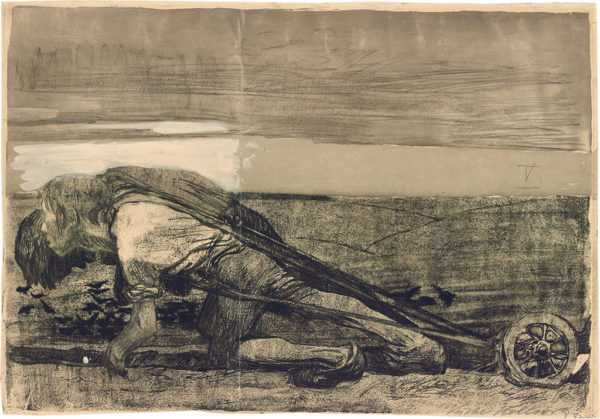At the Getty, two exhibitions of works on paper examine process and technique while presenting disparate views of peasantry. The Getty Research Institute’s “Käthe Kollwitz: Prints, Process, Politics” comprises over 50 prints, preparatory drawings and studies by controversial German printmaker Käthe Kollwitz (1867-1945), whose life spanned three turbulent eras of Germanic history. Whereas discussions of Kollwitz often emphasize her personal history and politics, this show highlights her technical versatility across varied graphic media, offering insight into the evolution of her visual language. Sequences of proofs and finished pieces from several print cycles, including “The Weavers” and “The Peasants’ War,” track her process of revising compositions and switching mediums to achieve her desired ends. For instance, studies for The Ploughmen (ca. 1906-1907, example above) illustrate how she eliminated multiple figures from various compositions before finally settling on a duo of oxen-like men whose backbreaking pose she further honed. Such images’ bleakness is matched by idealism in “Peasants in Pastel: Millet and the Pastel Revival,” a small but charming South Pavilion show of pastoral pastels by Millet and his followers. In marked contrast to Kollwitz’ stark gloomy monochromes, these scenes of farm life sparkle with color and light. It’s interesting to speculate as to whether Kollwitz ever saw Millet’s chalk drawings such as Man with a Hoe (ca. 1860-62), which highlights a farmer’s determination despite his fatigue. Whereas Kollwitz focused on laborers’ travail, Millet and his followers sought to elevate workers’ virtue; but the artists’ core principles, readily applicable to the present day, are more similar than they initially appear.
The Getty Center
1200 Getty Center Drive
Los Angeles, CA 90049
Kollwitz runs through Mar. 29
“Peasants in Pastel” runs through May 10


